Until October 7 last year – when Hamas attacked Israel from Gaza, sparking a bloody war – Bethlehem was also a tourist hotspot: the jewel in the crown of the US$1 billion Palestinian tourism industry.
“Whether you’re interested in the history, religion or culture of the city, it is definitely a fascinating place to visit,” reads information posted on the website of Tourist Israel, a travel company that runs tours in Israel and the West Bank. However, when I asked to join one of its Bethlehem tours, a spokesman for the company said those had been cancelled “due to the current situation”.
I had better luck at the tourist information centre in Tel Aviv’s old port city, Jaffa, where I met an Israeli who took tourists to Bethlehem before the war and who told me I could easily get a bus to Bethlehem from the Old City of Jerusalem.

Shortly after departing from the Damascus Gate, the largest and most elaborate of the entrances to the old city of Jerusalem, my bus is stopped. A pair of machine-gun-wielding Israeli border police board, to check everyone’s ID.
There are two other tourists on the bus, a Christian couple from Romania. The rest are Palestinians.
The road south of Jerusalem is an engineering marvel, with tunnels, bridges and long curves that peel down the Judaean Mountains. The views are dramatic of steep, jagged, barren hills festooned with villages.
I haven’t had a single customer since October 7
We arrive in Bethlehem 40 minutes later. First impressions? Everything is broken and dirty – the roads, the shops, the footpaths. Rubbish and weeds are everywhere. Old cars are dumped at the side of the road.
A taxi driver follows me on foot. He wants 20 Israeli shekels (US$5) to take me to the Unesco World Heritage-listed Old City of Bethlehem, where most of the historical sites are found and which lies atop a steep hill. He is pushy and arrogant.
When I tell him no, he asks me if I’m Jewish. As I walk away he shouts, “F**k you! I will get Hamas to kidnap you”.
My heart starts pounding. I can feel my pulse in my hands. It is impossible to know if he is just a taxi driver with an attitude or whether he is at that very moment on the phone with Hamas.
If it is the latter, walking back to the bus stop isn’t going to save me. I stay my course.
The road climbs and narrows, now lined with tall white terraces made from limestone that shine brightly in the sun. Soon I find myself in a bustling marketplace where cobblers and fruit sellers call out their wares and the smell of freshly baked flatbread wafts through the air. From a bell tower, church bells ring.
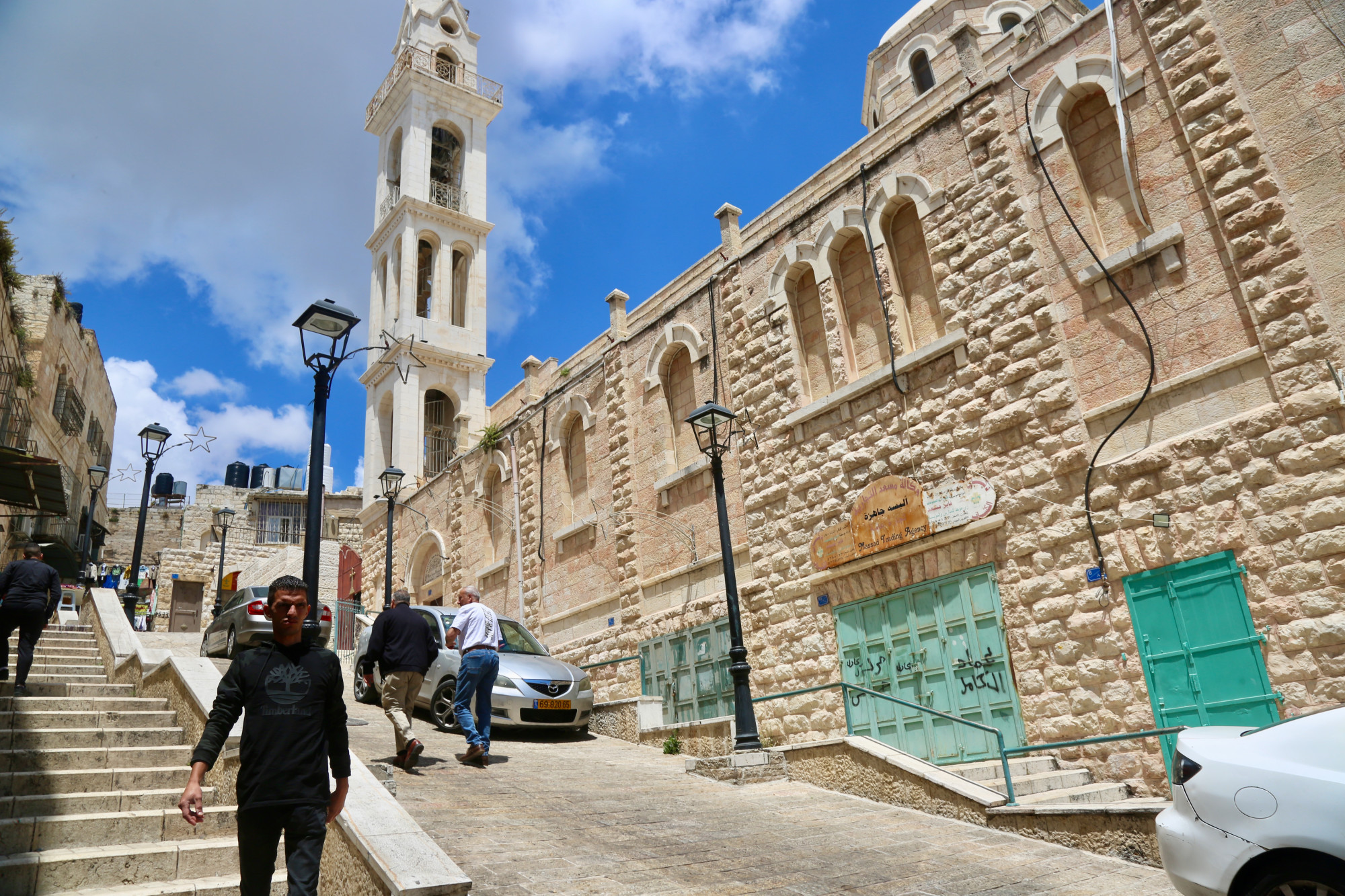
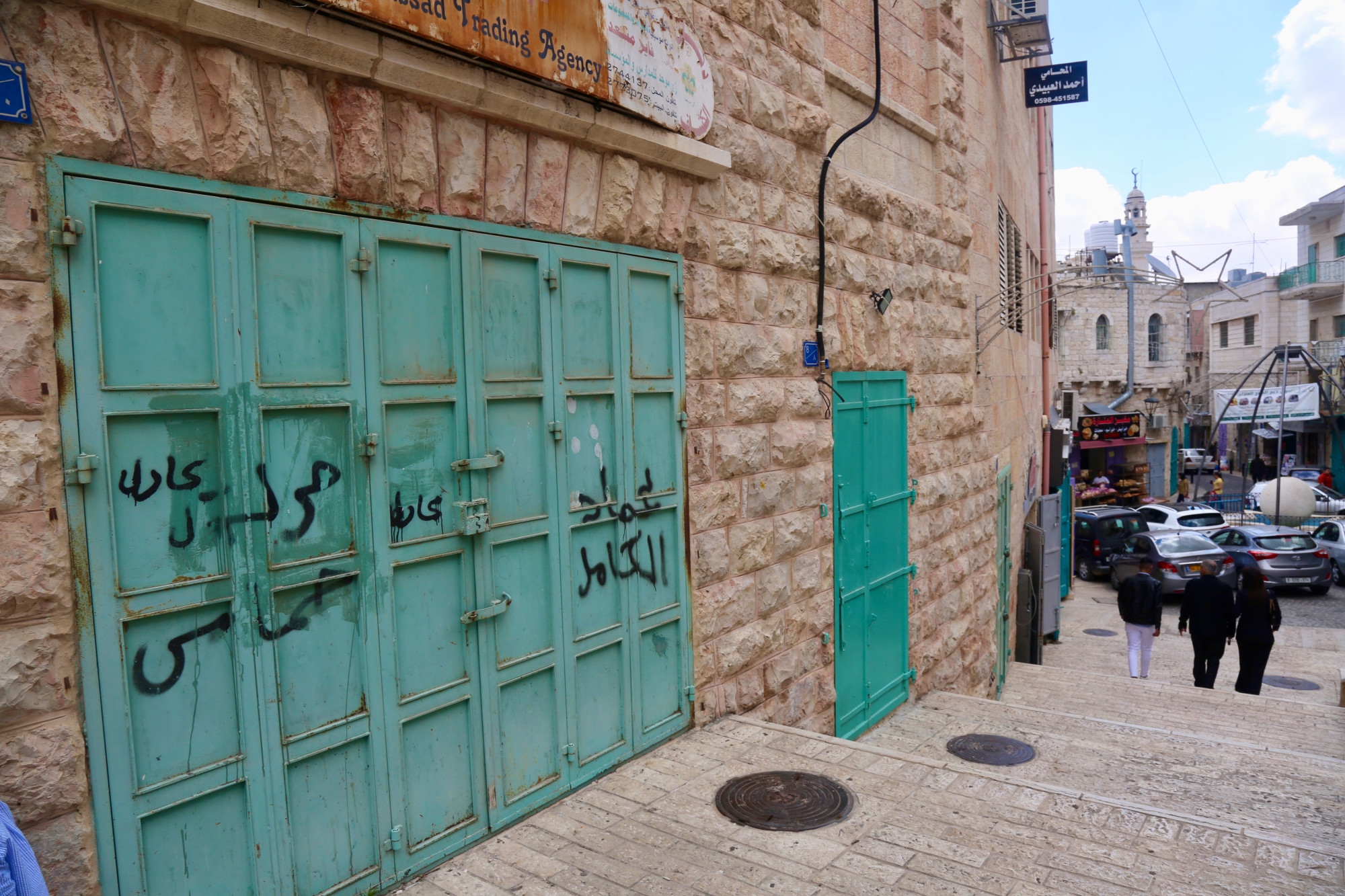
As the only Westerner, I draw looks from everyone I pass: either thinly veiled disdain or an expression of indifference. Scowling stallholders tell me not to photograph them. The only hospitality I receive is from children, who ask me where I come from.
The road narrows further, into a cobblestone alleyway lined with souvenir shops selling handicrafts and religious trinkets. But the shops are empty and the owners depressed.
“Bethlehem is a tourist place. Without tourists, how can we survive?” one laments.
“I haven’t had a single customer since October 7,” says another, mumbling that the war is Israel’s fault.
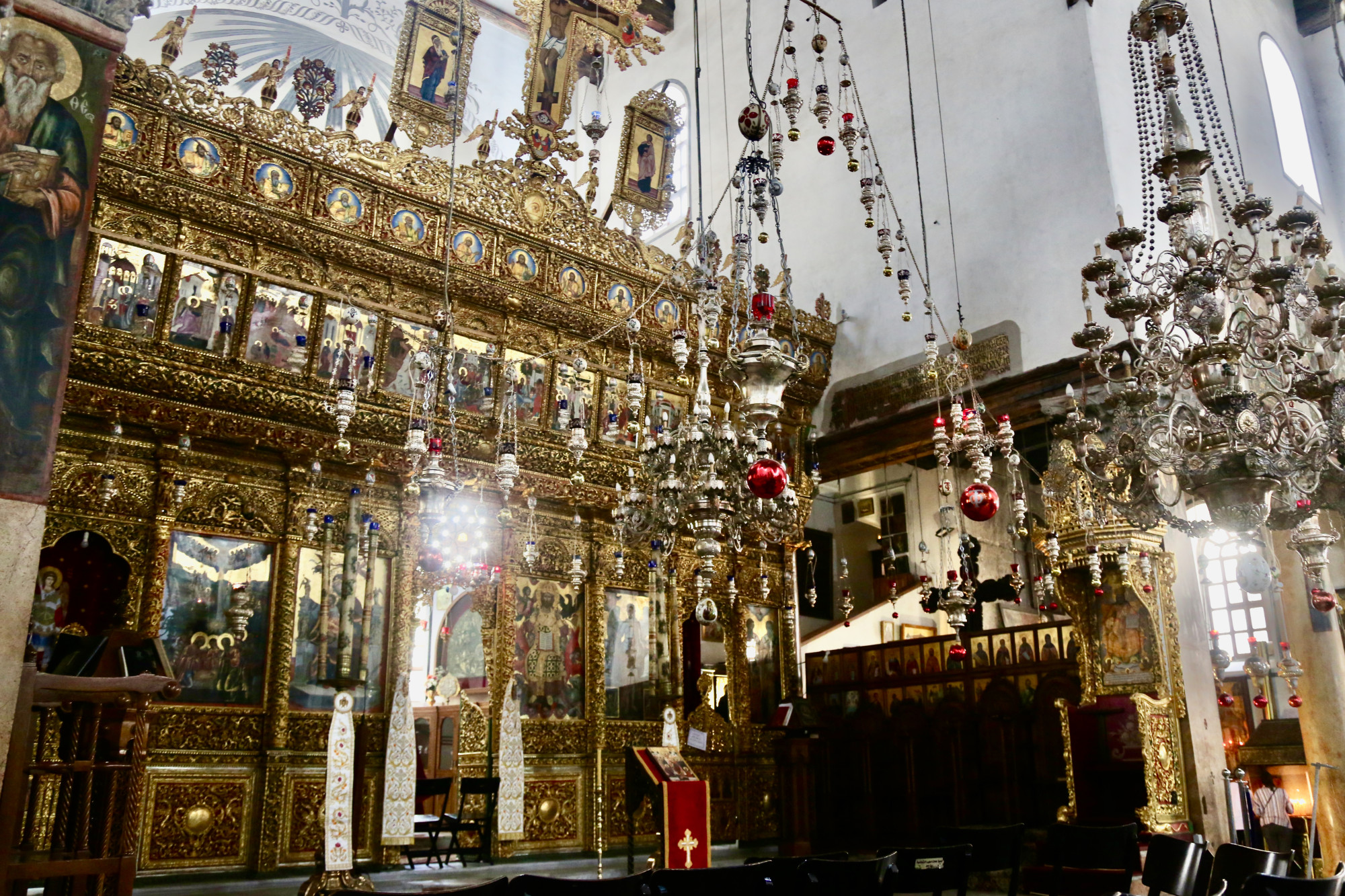
At the top of the hill stands the Church of the Nativity, the main attraction in Bethlehem. Built in the Romanesque style in AD565, it is Christianity’s oldest continually used place of worship and the oldest major church in Israel.
It is immaculately maintained, with stunning courtyard gardens full of flowers, and there is a knight’s armour in a glass casing set within a wall.
The Grotto of the Nativity, where Jesus is said to have been born, is a cave underneath the main altar in one of two large churches. Plated with brass and silver, the altar is fronted by a constellation of candelabras, each an elaborate work of art.
“The grotto is the most sought-after site in Bethlehem, so expect crowds and long lines,” warns Tourist Israel’s website. “No guide can guarantee the time to actually enter the grotto itself.”
Today there is only a small group of tourists from an Arabic country and a couple from somewhere in Africa.
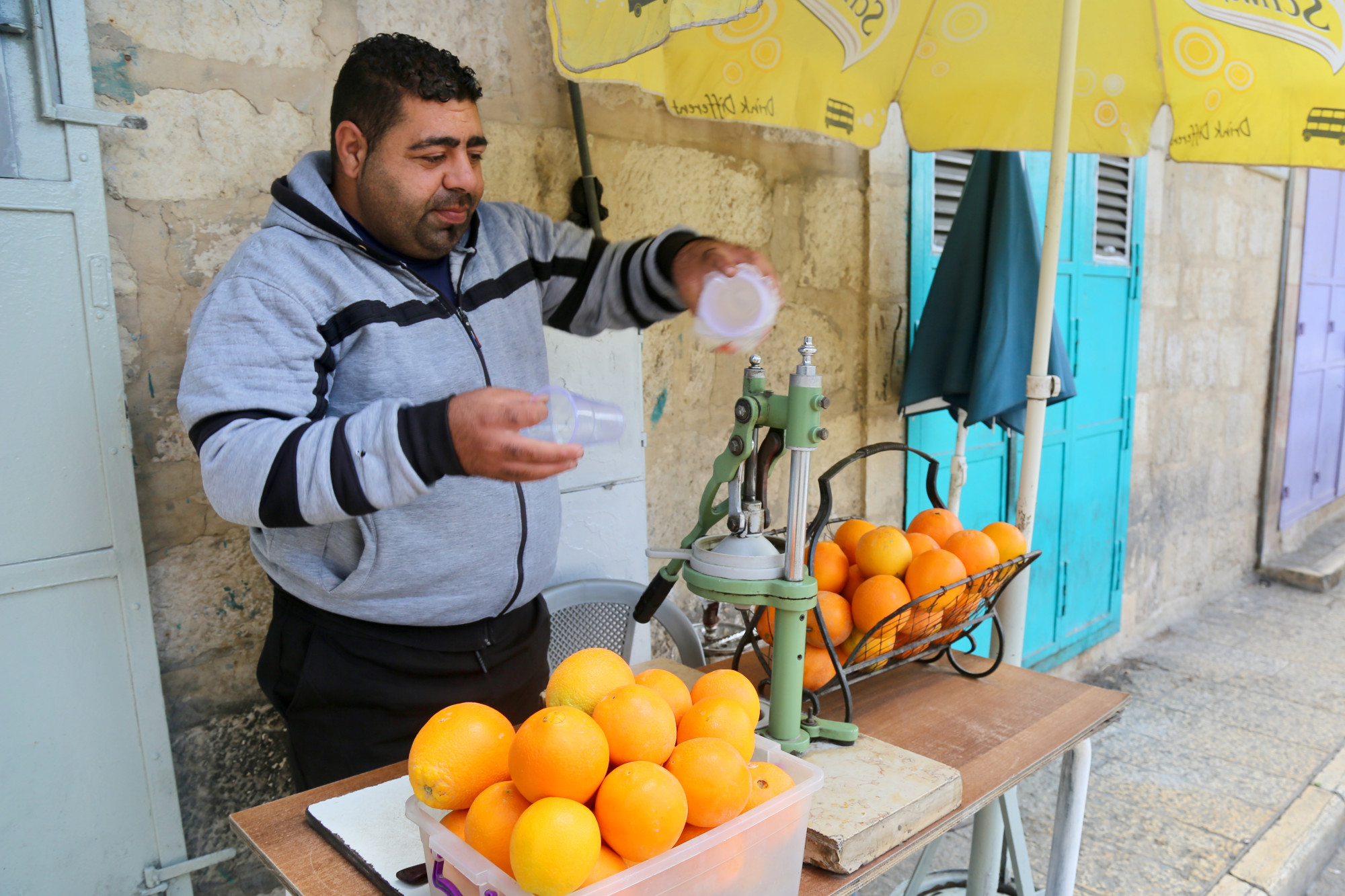
International tourist arrivals in Israel have dropped 80 per cent since October 7, and most of those coming now are Jews or Christian evangelists who support the Israeli government unequivocally and are unlikely ever to set foot in the West Bank.
I go back the way I came, stopping at the marketplace to buy a falafel sandwich stuffed with hummus, salads and pickles for 5 shekels, a fifth of what it costs in Israel, and a glass of orange juice that is squeezed in a press in front of me.
I also speak with two Palestinian policemen and mention the taxi driver who threatened me. They dismiss the incident as “personal problems” and assure me Bethlehem is safe.
Before returning to Jerusalem I want to visit another key pilgrimage site, Rachel’s Tomb, the burial place of the Biblical matriarch who is held in esteem by Jews, Christians and Muslims.
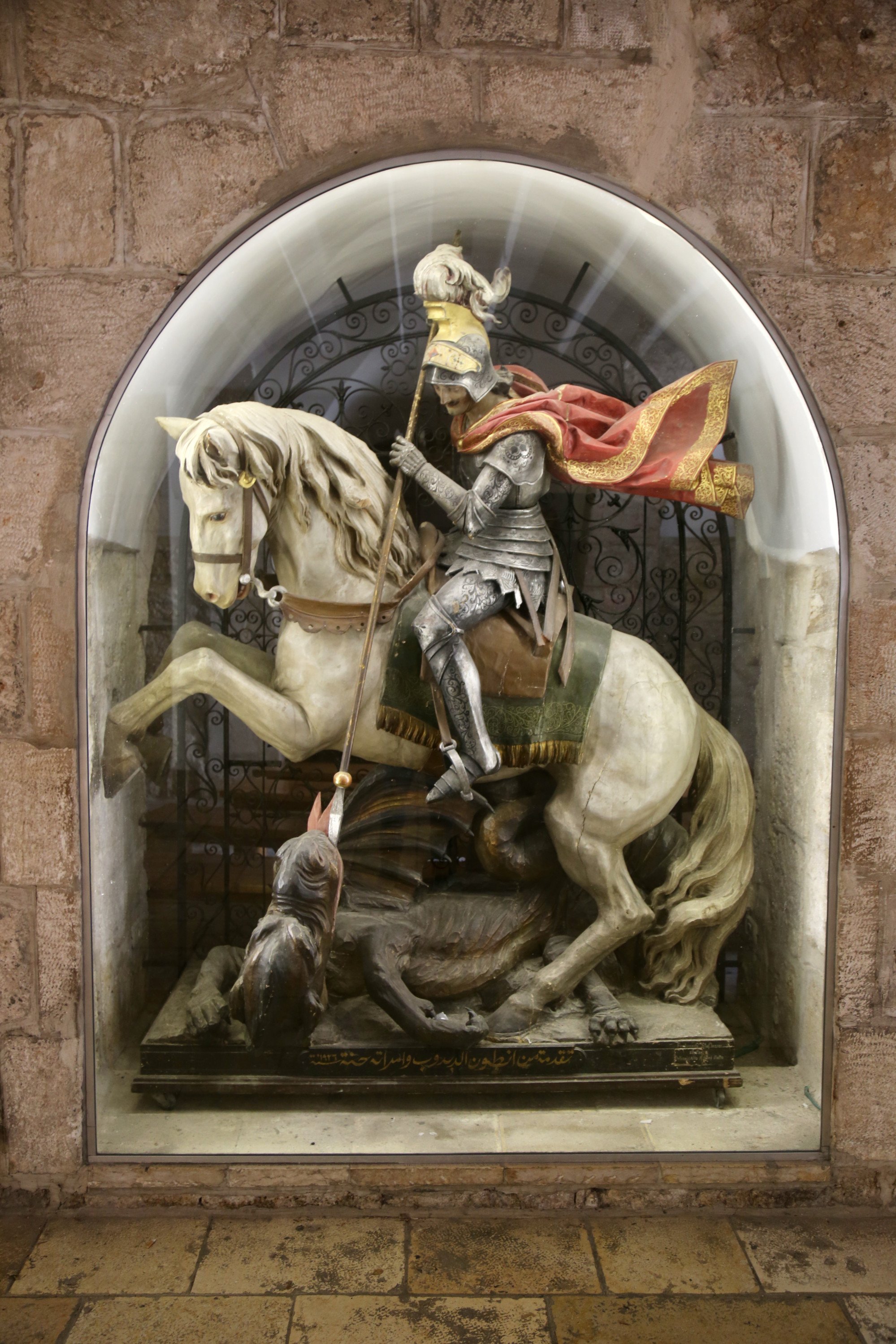
The route takes me along a wide, scorching hot, treeless boulevard lined with dingy storefronts where men sit smoking water pipes in groups and beggars creep out of corners, demanding money to feed their children.
When I reach Rachel’s Tomb I hit a wall – literally.
Stretching for more than 700km, the West Bank Wall is a brutal nine-metre (29ft) high concrete separation barrier built by Tel Aviv 20 years ago following a wave of Palestinian suicide bombings in Israel.
The Israeli government says suicide attacks dropped 84 per cent in the three years after the wall was built compared with the three years prior. Palestinians, on the other hand, claim the wall is a tool of racial segregation and apartheid.
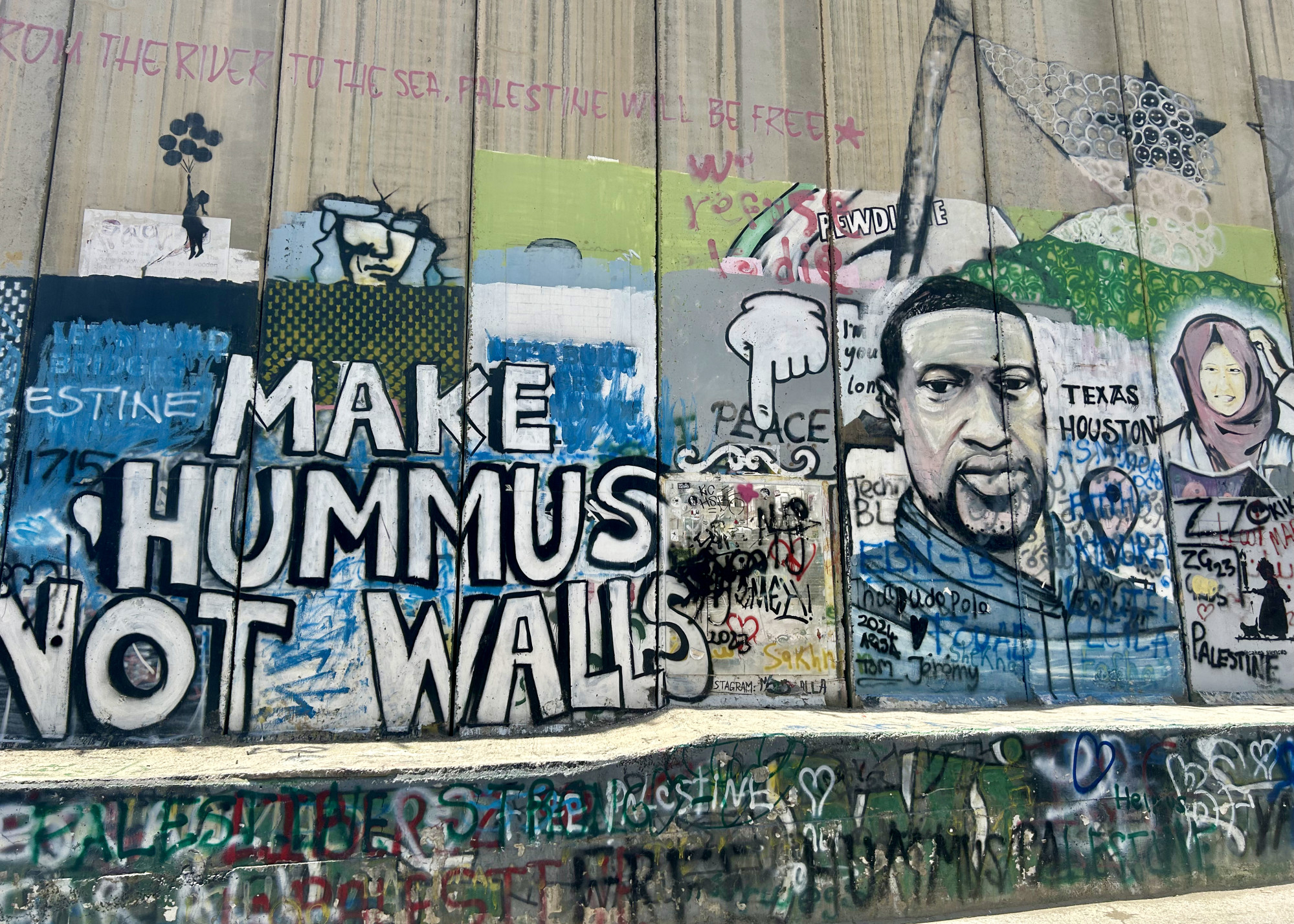
Although I cannot visit Rachel’s Tomb, I do get to see another of Bethlehem’s attractions, Banksy’s Wall, a section of the separation barrier wallpapered in political graffiti and murals.
Named after British street artist Banksy, it was a popular “dark tourism” spot before the war, attracting tens of thousands of visitors every year. But on this day, I alone admire the striking murals painted by local and international artists.
I hail a taxi. The driver tears through the narrow streets of Bethlehem like a maniac, yelling sexually explicit insults at women we pass. He complains to me about the war, and says it is all Israel’s fault, before dumping me at a bus stop.
I don’t have to wait long for a ride. The bus winds up a series of tight hairpin turns on a steep road wedged between terrace buildings. After joining the highway to Jerusalem, we come to a stop at a military checkpoint. Everyone has to file out and present their IDs and travel permits for Israel.
Five Palestinians are pulled aside, including a couple with a baby; there is a problem with their permits and they look stressed. But after 20 minutes, everyone is waved through.
I sigh with relief when the bus enters Israel. I do not recommend travelling to Bethlehem currently.







